Related Research Articles

The Fortress of Louisbourg is a tourist attraction as a National Historic Site and the location of a one-quarter partial reconstruction of an 18th-century French fortress at Louisbourg on Cape Breton Island, Nova Scotia. Its two sieges, especially that of 1758, were turning points in the Anglo-French struggle for what today is Canada.

Louisbourg is an unincorporated community and former town in Cape Breton Regional Municipality, Nova Scotia.

The Expulsion of the Acadians, also known as the Great Upheaval, the Great Expulsion, the Great Deportation, and the Deportation of the Acadians, was the forced removal, by the British, of inhabitants of parts of a Canadian-American region historically known as Acadia, between 1755–1764. The area included the present-day Canadian Maritime provinces of Nova Scotia, New Brunswick, and Prince Edward Island, and the present-day U.S. state of Maine. The Expulsion, which caused the deaths of thousands of people, occurred during the French and Indian War and was part of the British military campaign against New France.

Baddeck is a village in northeastern Nova Scotia, Canada. It is situated in the centre of Cape Breton, approximately 6 km east of where the Baddeck River empties into Bras d'Or Lake.

Lance Gerard Woolaver is a Canadian author, poet, playwright, lyricist, and director. His best-known works include books, film and biographical plays about Canadian folk artist Maud Lewis, including Maud Lewis The Heart on the Door, and Maud Lewis - World Without Shadows. His plays include one about international singer Portia White, who was born in Nova Scotia: Portia White - First You Dream.
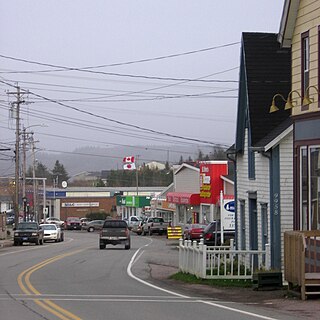
St. Peter's is a small incorporated village located on Cape Breton Island in Richmond County, Nova Scotia, Canada.

Grand-Pré National Historic Site is a park set aside to commemorate the Grand-Pré area of Nova Scotia as a centre of Acadian settlement from 1682 to 1755, and the British deportation of the Acadians that happened during the French and Indian War. The original village of Grand Pré extended four kilometres along the ridge between present-day Wolfville and Hortonville. Grand-Pré is listed as a World Heritage Site and is the main component of two National Historic Sites of Canada.

Jeanne-Marie Leprince de Beaumont was a French novelist who wrote the best known version of Beauty and the Beast. Her third husband was the French spy Thomas Pichon (1757–1760).
This is a bibliography of major works on Nova Scotia.
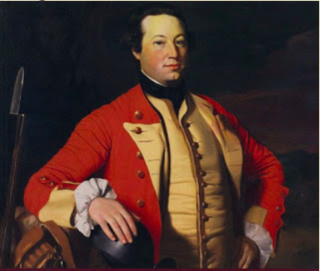
The Petitcodiac River campaign was a series of British military operations from June to November 1758, during the French and Indian War, to deport the Acadians that either lived along the Petitcodiac River or had taken refuge there from earlier deportation operations, such as the Ile Saint-Jean campaign. Under the command of George Scott, William Stark's company of Rogers Rangers, Benoni Danks and Gorham's Rangers carried out the operation.

The Battle of Winnepang occurred during Dummer's War when New England forces attacked Mi'kmaq at present day Jeddore Harbour, Nova Scotia. The naval battle was part of a campaign ordered by Governor Richard Philipps to retrieve over 82 New England prisoners taken by the Mi'kmaq in fishing vessels off the coast of Nova Scotia. The New England force was led by Ensign John Bradstreet and fishing Captain John Elliot.
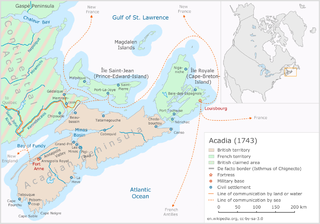
Father Le Loutre's War (1749–1755), also known as the Indian War, the Mi'kmaq War and the Anglo-Mi'kmaq War, took place between King George's War and the French and Indian War in Acadia and Nova Scotia. On one side of the conflict, the British and New England colonists were led by British officer Charles Lawrence and New England Ranger John Gorham. On the other side, Father Jean-Louis Le Loutre led the Mi'kmaq and the Acadia militia in guerrilla warfare against settlers and British forces. At the outbreak of the war there were an estimated 2500 Mi'kmaq and 12,000 Acadians in the region.

The Acadian Exodus happened during Father Le Loutre's War (1749–1755) and involved almost half of the total Acadian population of Nova Scotia deciding to relocate to French controlled territories. The three primary destinations were: the west side of the Mesagoueche River in the Chignecto region, Isle Saint-Jean and Île-Royale. The leader of the Exodus was Father Jean-Louis Le Loutre, whom the British gave the code name "Moses". Le Loutre acted in conjunction with Governor of New France Roland-Michel Barrin de La Galissonière who encouraged the Acadian migration. A prominent Acadian who transported Acadians to Ile St. Jean and Ile Royal was Joseph-Nicolas Gautier. The overall upheaval of the early 1750s in Nova Scotia was unprecedented. Present-day Atlantic Canada witnessed more population movements, more fortification construction, and more troop allocations than ever before in the region. The greatest immigration of the Acadians between 1749 and 1755 took place in 1750. Primarily due to natural disasters and British raids, the Exodus proved to be unsustainable when Acadians tried to develop communities in the French territories.
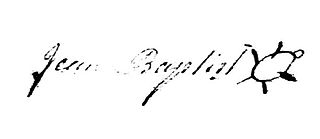
Jean Baptiste Cope was also known as Major Cope, a title he was probably given from the French military, the highest rank given to Mi’kmaq. Cope was the sakamaw (chief) of the Mi'kmaq people of Shubenacadie, Nova Scotia. He maintained close ties with the Acadians along the Bay of Fundy, speaking French and being Catholic. During Father Le Loutre’s War, Cope participated in both military efforts to resist the British and also efforts to create peace with the British. During the French and Indian War he was at Miramichi, New Brunswick, where he is presumed to have died during the war. Cope is perhaps best known for signing the Treaty of 1752 with the British, which was upheld in the Supreme Court of Canada in 1985 and is celebrated every year along with other treaties on Treaty Day.

Nova Scotia is a Canadian province located in Canada's Maritimes. The region was initially occupied by Mi'kmaq. The colonial history of Nova Scotia includes the present-day Maritime Provinces and the northern part of Maine, all of which were at one time part of Nova Scotia. In 1763, Cape Breton Island and St. John's Island became part of Nova Scotia. In 1769, St. John's Island became a separate colony. Nova Scotia included present-day New Brunswick until that province was established in 1784. During the first 150 years of European settlement, the colony was primarily made up of Catholic Acadians, Maliseet, and Mi'kmaq. During the last 75 years of this time period, there were six colonial wars that took place in Nova Scotia. After agreeing to several peace treaties, the long period of warfare ended with the Halifax Treaties (1761) and two years later, when the British defeated the French in North America (1763). During those wars, the Acadians, Mi'kmaq and Maliseet from the region fought to protect the border of Acadia from New England. They fought the war on two fronts: the southern border of Acadia, which New France defined as the Kennebec River in southern Maine, and in Nova Scotia, which involved preventing New Englanders from taking the capital of Acadia, Port Royal and establishing themselves at Canso.

The siege of Annapolis Royal in 1745 involved the third of four attempts by the French, along with their Acadian and native allies, to regain the capital of Nova Scotia/Acadia, Annapolis Royal, during King George's War. During the siege William Pote was taken prisoner and wrote one of the rare captivity narratives that exist from Nova Scotia and Acadia.

Thomas Pichon, also known as Thomas Tyrell, was a French government agent during Father Le Loutre's War. Pichon is renowned for betraying the French, Acadian and Mi’kmaq forces by providing information to the British, which led to the fall of Beauséjour. He has been referred to as "The Judas of Acadia."
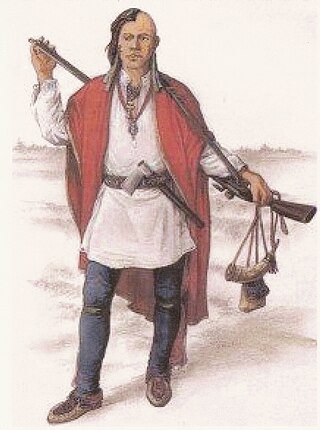
The military history of the Mi'kmaq consisted primarily of Mi'kmaq warriors (smáknisk) who participated in wars against the English independently as well as in coordination with the Acadian militia and French royal forces. The Mi'kmaq militias remained an effective force for over 75 years before the Halifax Treaties were signed (1760–1761). In the nineteenth century, the Mi'kmaq "boasted" that, in their contest with the British, the Mi'kmaq "killed more men than they lost". In 1753, Charles Morris stated that the Mi'kmaq have the advantage of "no settlement or place of abode, but wandering from place to place in unknown and, therefore, inaccessible woods, is so great that it has hitherto rendered all attempts to surprise them ineffectual". Leadership on both sides of the conflict employed standard colonial warfare, which included scalping non-combatants. After some engagements against the British during the American Revolutionary War, the militias were dormant throughout the nineteenth century, while the Mi'kmaq people used diplomatic efforts to have the local authorities honour the treaties. After confederation, Mi'kmaq warriors eventually joined Canada's war efforts in World War I and World War II. The most well-known colonial leaders of these militias were Chief (Sakamaw) Jean-Baptiste Cope and Chief Étienne Bâtard.

The military history of the Acadians consisted primarily of militias made up of Acadian settlers who participated in wars against the English in coordination with the Wabanaki Confederacy and French royal forces. A number of Acadians provided military intelligence, sanctuary, and logistical support to the various resistance movements against British rule in Acadia, while other Acadians remained neutral in the contest between the Franco–Wabanaki Confederacy forces and the British. The Acadian militias managed to maintain an effective resistance movement for more than 75 years and through six wars before their eventual demise. According to Acadian historian Maurice Basque, the story of Evangeline continues to influence historic accounts of the expulsion, emphasising Acadians who remained neutral and de-emphasising those who joined resistance movements. While Acadian militias were briefly active during the American Revolutionary War, the militias were dormant throughout the nineteenth century. After confederation, Acadians eventually joined the Canadian War efforts in World War I and World War II. The most well-known colonial leaders of these militias were Joseph Broussard and Joseph-Nicolas Gautier.
Alexander Denny, otherwise known as Kji-keptin Alex Denny of the Mi'kmaq Grand Council, both a founding member and two-term president of the UNSI, was most prominently known for the role he played in the ongoing battle for recognition of Mi'kmaq treaties and Aboriginal rights. Born to the Eskasoni First Nation and raised by two elders in the community, Denny was taught the importance of Mi'kmaq treaties from a young age. His passion for and knowledge of his community ultimately led Denny to be credited with attaining linguistic and political rights for the Mi'kmaq Nation at an international level. Additionally, It was Denny and the UNSI that organized the very first Treaty Day.
References
- 1 2 3 4 5 "Bio". A.J.B. Johnston | Novelist, Historian & Interpretive Writer | Thomas: A Secret Life. Archived from the original on 10 October 2013. Retrieved 9 October 2013.
- ↑ Canadian Who's Who. University of Toronto Press. 2011. pp. 614. ISBN 9780921173274.
- ↑ "A J B Johnston" . Retrieved 27 March 2013.
- ↑ "CBC-TV at the Table" . Retrieved 11 January 2013.[ dead link ]
- ↑ McNeil, Greg (19 November 2011). "Louisbourg historian to be knighted by French government". Cape Breton Post.
- ↑ "The Clio Prizes". Archived from the original on 23 September 2015. Retrieved 27 March 2013.
- ↑ "A J B Johnston". Archived from the original on 27 September 2017. Retrieved 8 February 2018.
- ↑ "none". Halifax Chronicle Herald. 24 May 2014.
- ↑ "A J B Johnston". Archived from the original on 27 September 2017. Retrieved 27 September 2017.
- ↑ "A J B Johnston". Archived from the original on 27 September 2017. Retrieved 27 March 2013.
- ↑ "The Maze" . Retrieved 5 April 2014.[ permanent dead link ]
- ↑ Norris, Laurie Glenn (Fall 2012). Atlantic Books Today (70): 33–34.
{{cite journal}}: CS1 maint: untitled periodical (link) - ↑ Sawler, Trevor (2013). The Antigonish Review. 173 (Spring): 89.
{{cite journal}}: CS1 maint: untitled periodical (link) - ↑ Bennett, Paul W. (14 June 2014). "The roots of a notorious spy". The Chronicle Herald: G4.
- ↑ Sawyer, Trevor (2015). Nashwaak Review. 32–33.
{{cite journal}}: CS1 maint: untitled periodical (link) - ↑ "A J B Johnston". Archived from the original on 27 September 2017. Retrieved 1 February 2018.
- ↑ "A J B Johnston". Writers Federation. Archived from the original on 27 September 2017. Retrieved 21 September 2018.
- ↑ Lawlor, Allison (4 May 2020). "Kings of Friday Night". The Chronicle Herald: B1.
- ↑ "John MacLachlan Gray » Authors » Talonbooks".
- ↑ "Book Me! Podcasts".
- ↑ Archived at Ghostarchive and the Wayback Machine : Kings of Friday Night: The Lincolns. YouTube .
- ↑ "A J B Johnston". Writers Federation. Archived from the original on 27 September 2017. Retrieved 27 March 2013.
- ↑ "A J B Johnston". Writers Federation. Archived from the original on 27 September 2017. Retrieved 5 May 2016.
- ↑ "HRM announces members to serve on Cornwallis special advisory committee". 27 July 2018.
- ↑ "New Book | A.J.B. Johnston | Historian and Novelist". 22 January 2022.
- Cape Breton Post, 20 March 2012